LOS ANGELES—Nonaka-Hill’s Sterling Ruby and Masaomi Yasunaga, brings together two of the most innovative makers in ceramics today. The exhibition finds parallels between two studio practices developed an ocean apart; Ruby in Los Angeles, California, United States and Yasunaga in Iga, Mie Prefecture, Japan. Every object in these rooms is composed of earthen matter, shaped into familiar forms; basins, baskets, mortars, plates, vessels, bowls, cups and clubs, small animals, birds, shells, flowers and hearts. Also, the legs of a ballet dancer.
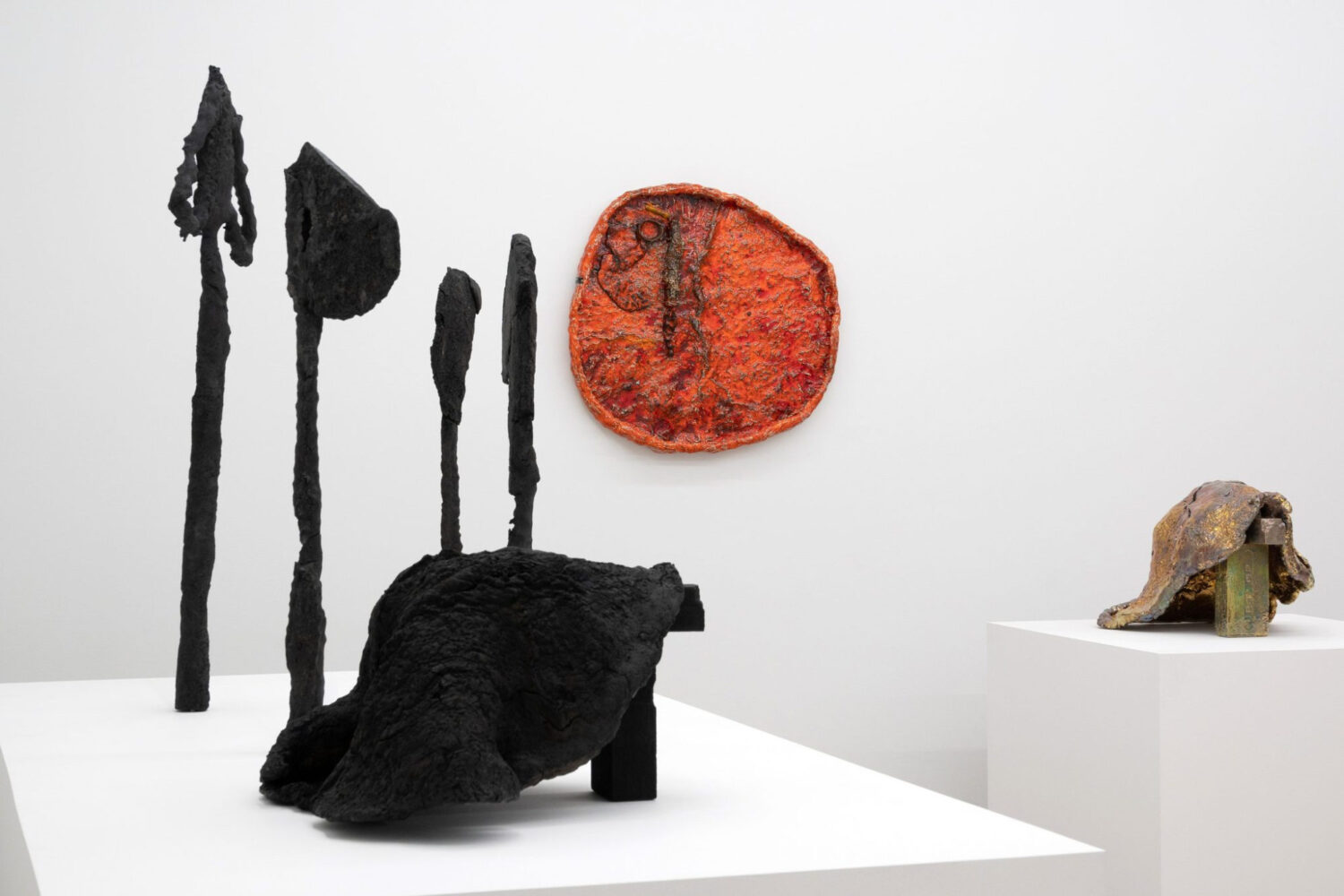
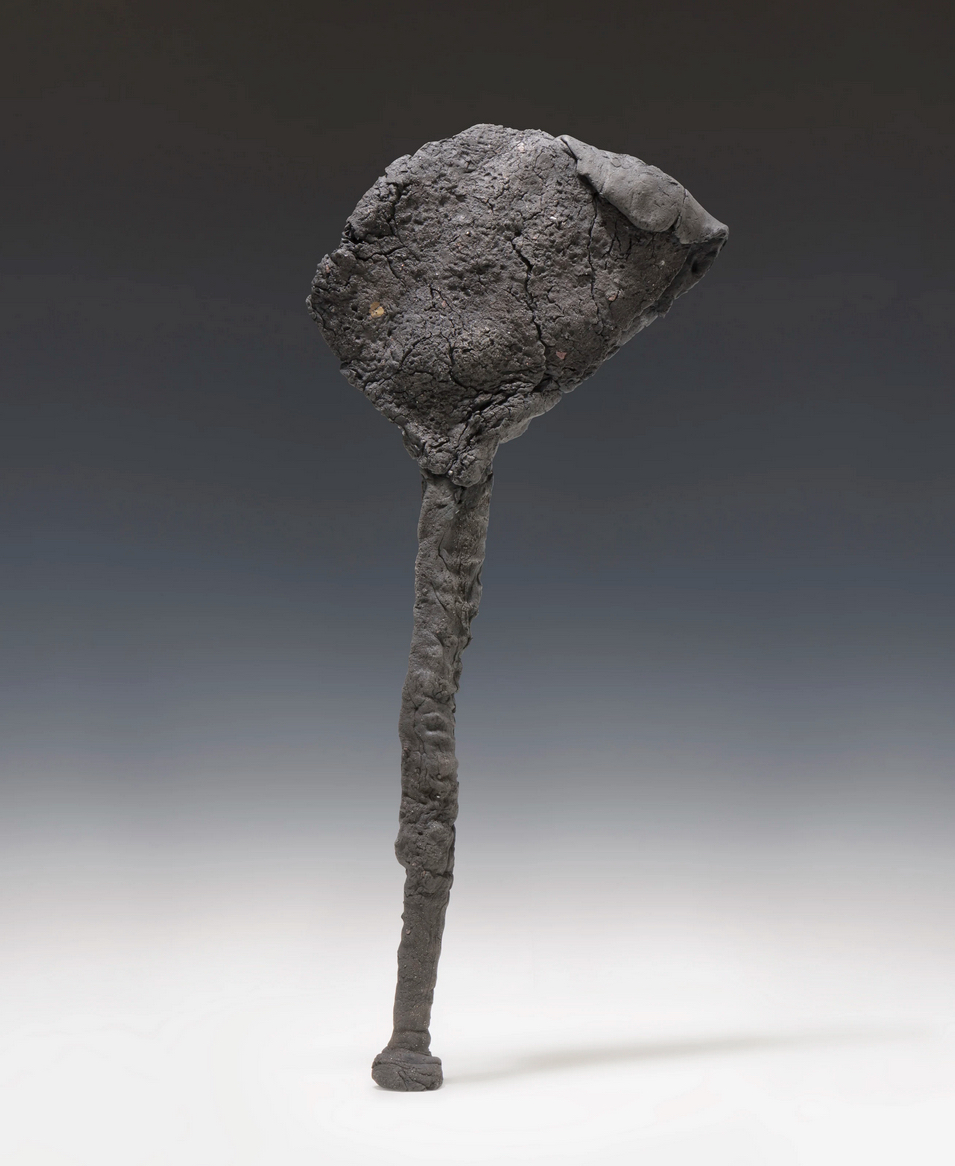
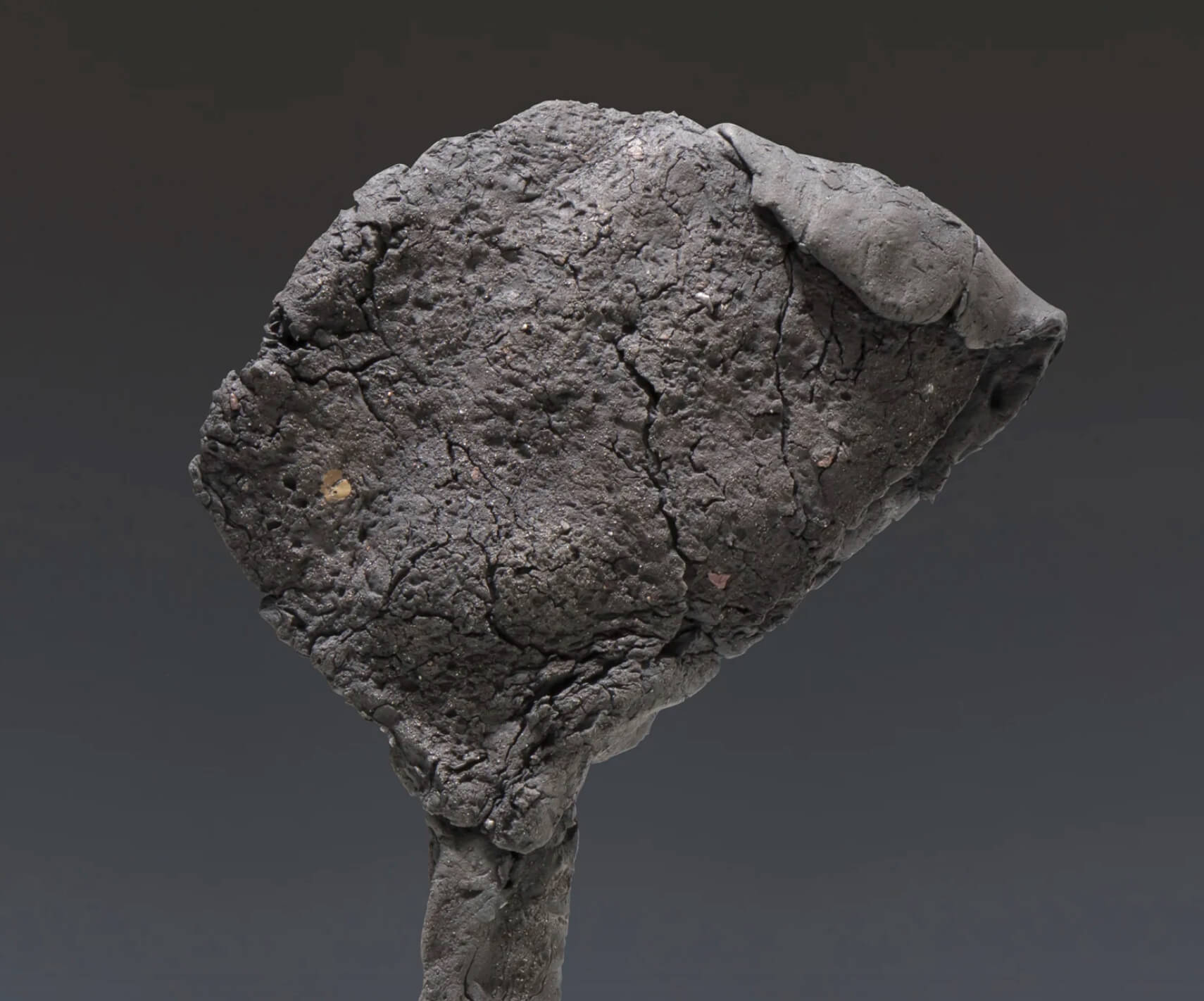
They appear misshapen, eroded, melted, sometimes fused and usually empty. All have extraordinary surfaces. It’s been observed that these works elicit archeological fantasies in the viewer, perhaps because we’ve been pre-conditioned to seek enlightenment from even the smallest ceramic shards.
Both artists have engaged excavation as a muse, a metaphor and as a vital physical component of their studio production of the works on view here. Growing up in proximity to Pennsylvania’s Amish community, Sterling Ruby observed the potential for self-sufficiency through humility and the discipline of putting away resources for later use. Images of Amish quilts, an example of such re-use, appeared in the artist’s earliest collage and photographic works, alongside images of ancient ceramics, which may have been entombed and disinterred. The artist conceptualized the circulation of images, materials and all by-product into an ethos for his wide-ranging production in multiple media.
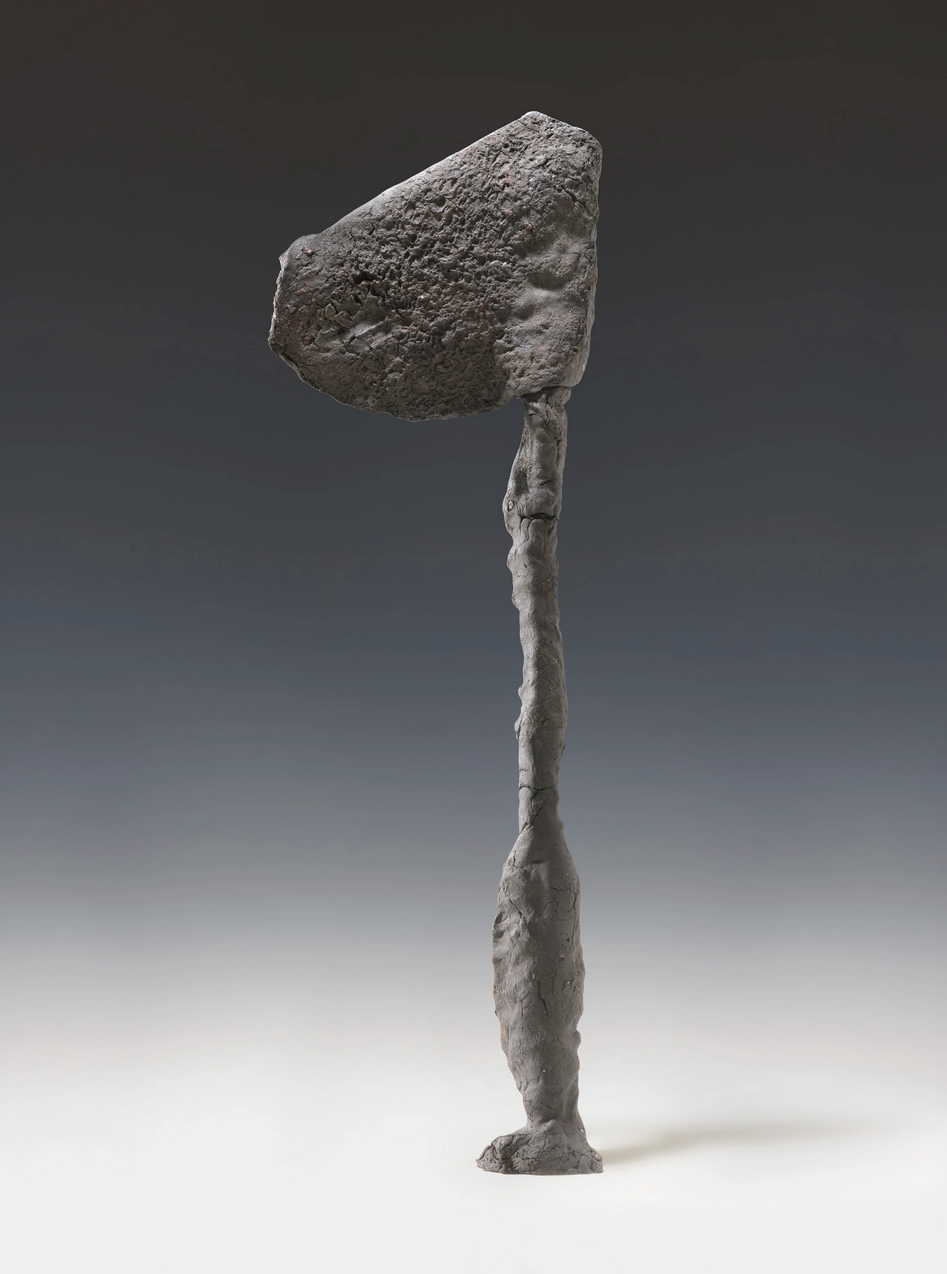
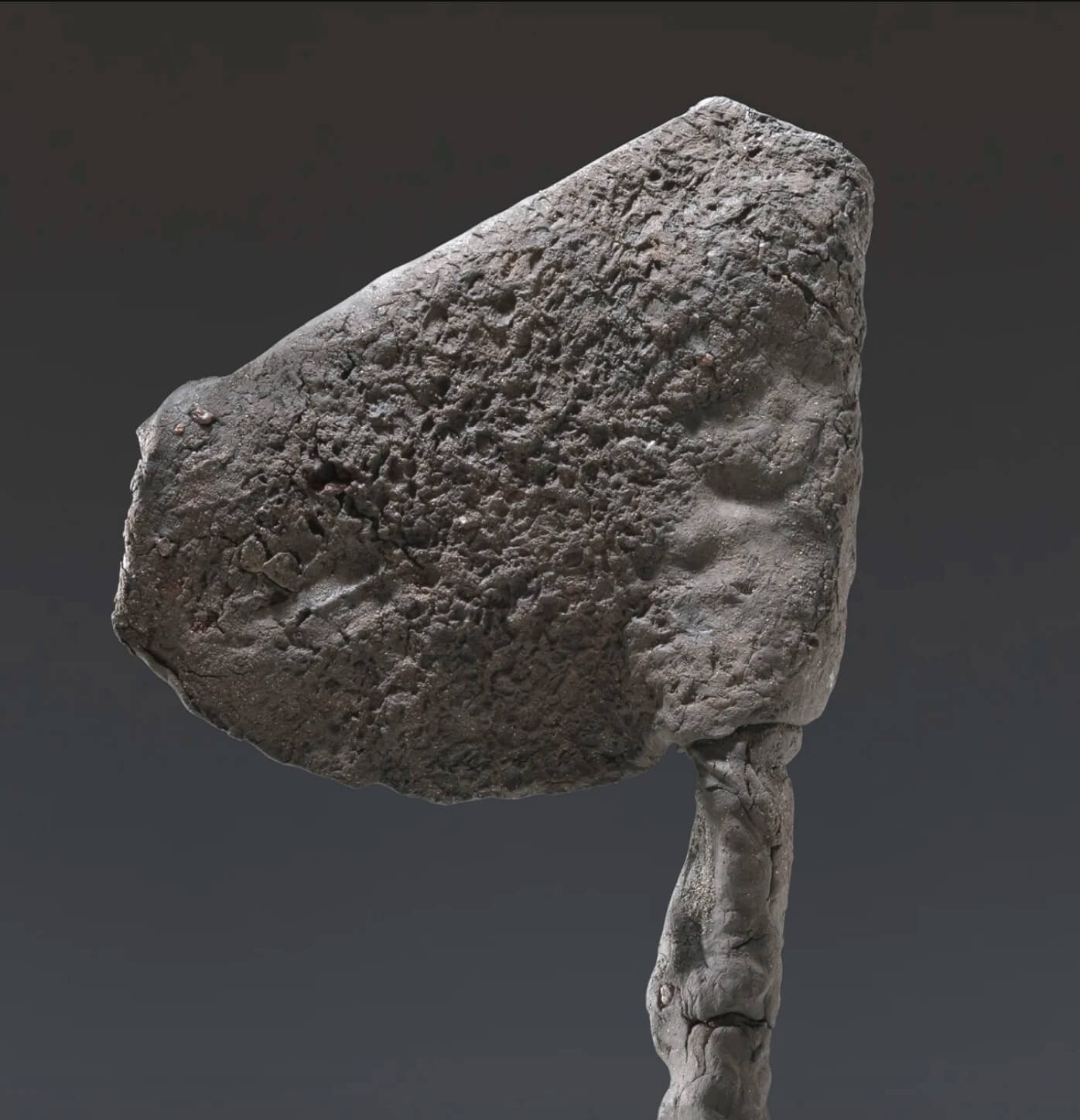
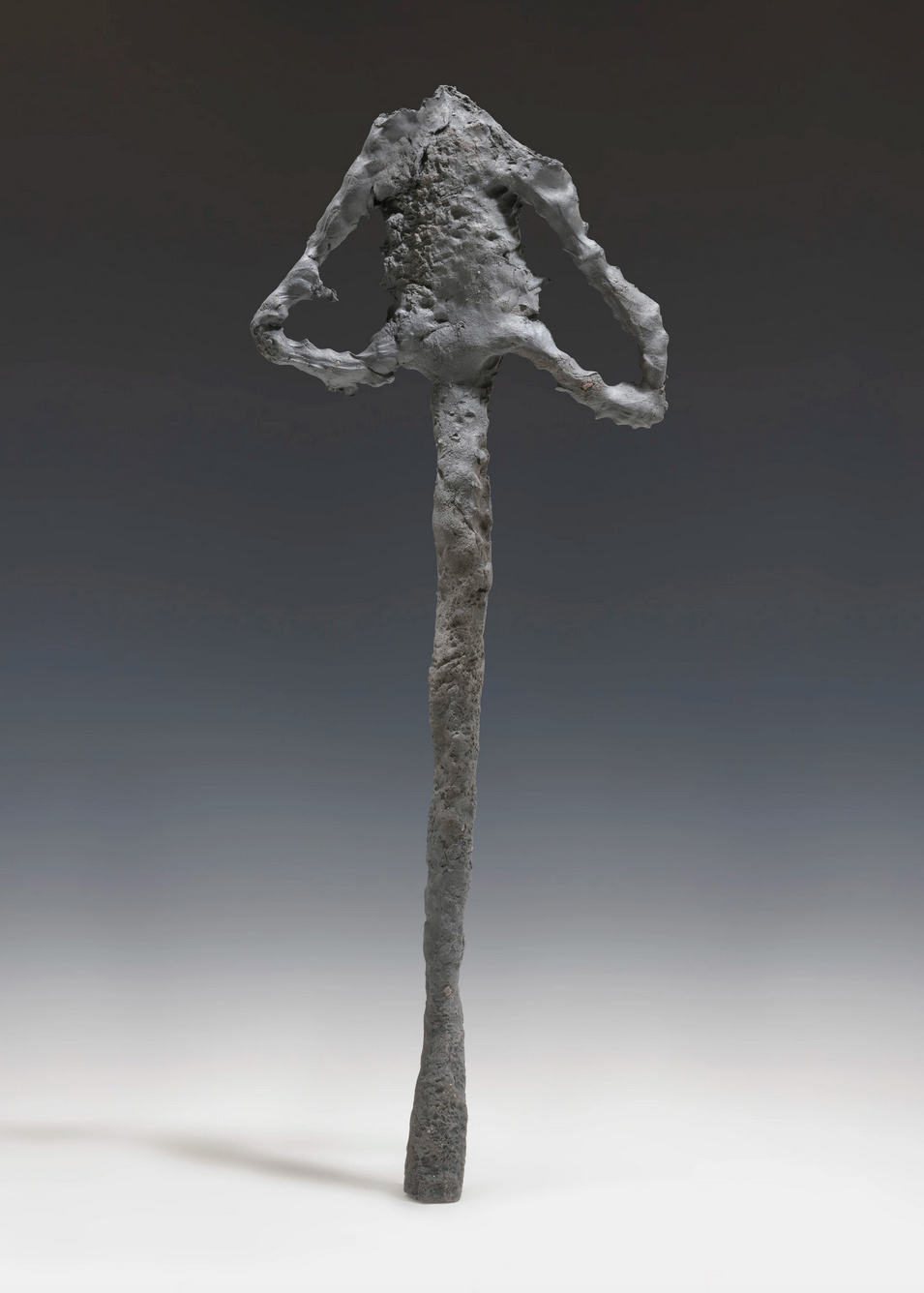
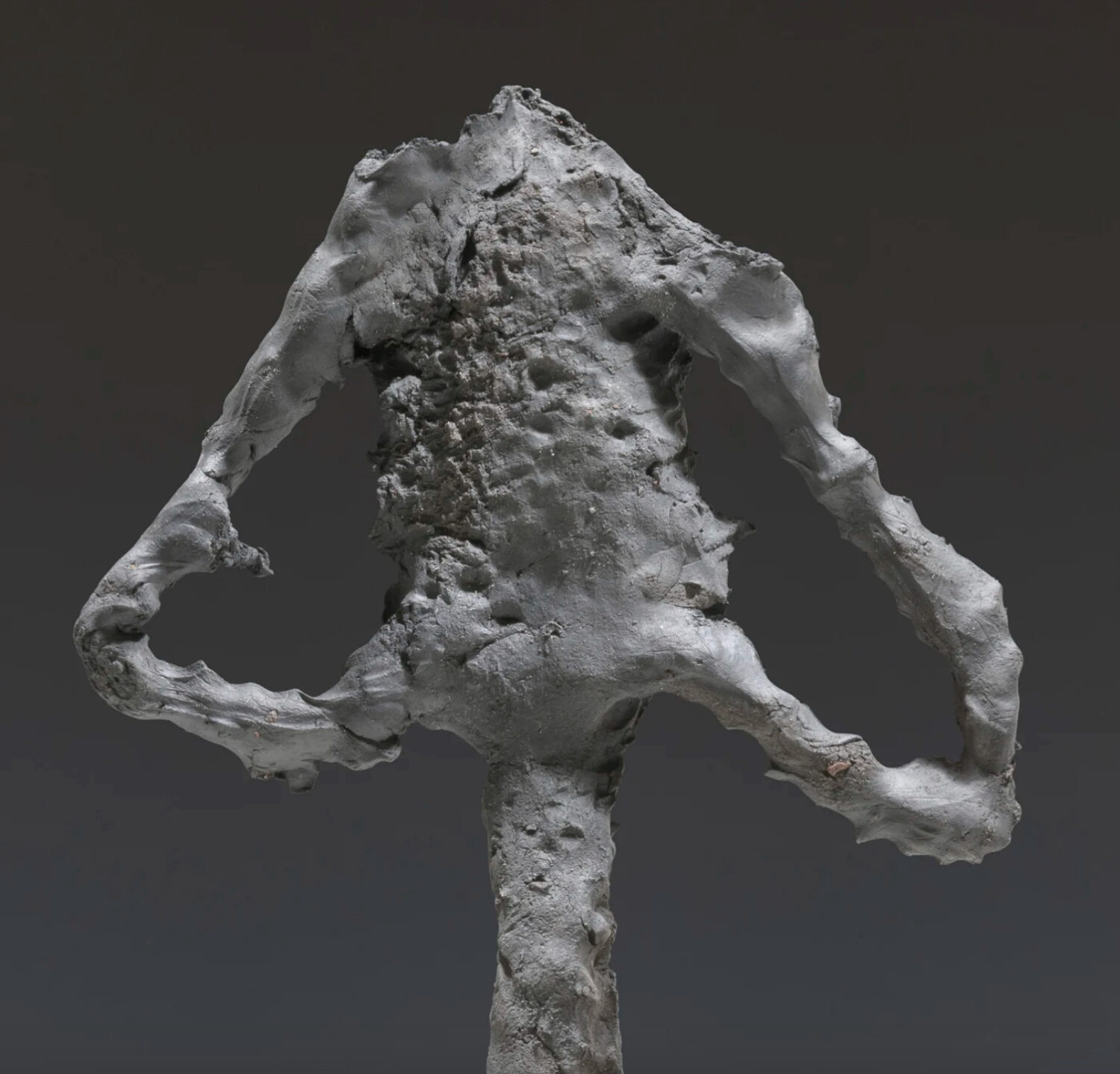
Citing clay as his “monument material,” Ruby salvages failed or broken ceramic attempts to later reveal in his Basin Theology series. These repository works lovingly nestle elements which may have ripped, cracked, shattered or exploded elsewhere, returning them to the kiln embellished with every kind of surface finish, from pooled glazes in a spectrum of colors, to iridescent metallics and dusty metallic lusters. Ruby exhibits works from ongoing series, including MORTARS, CLUBS and BALLET, and debuts new-wall based FLOWERS, which appear both ravaged and sentimental.
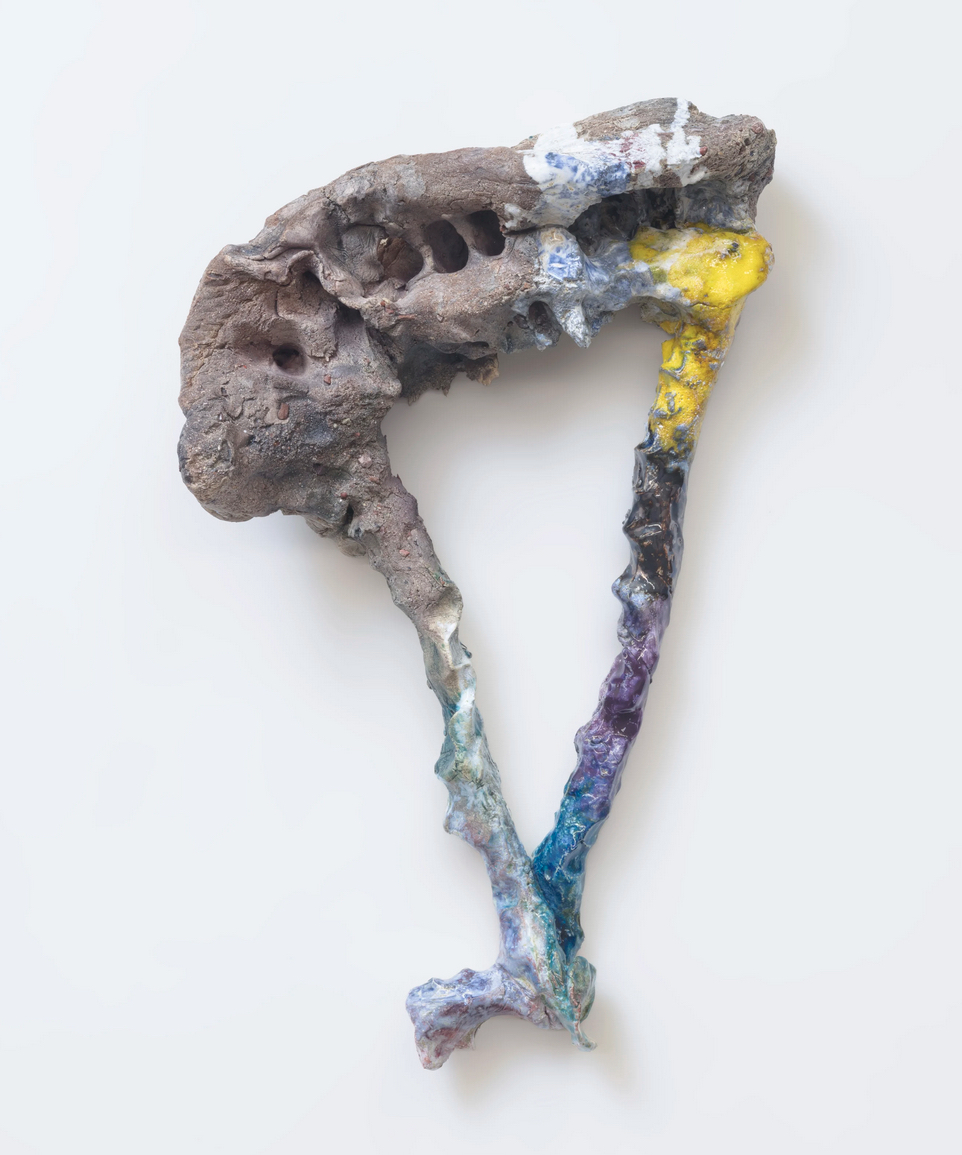
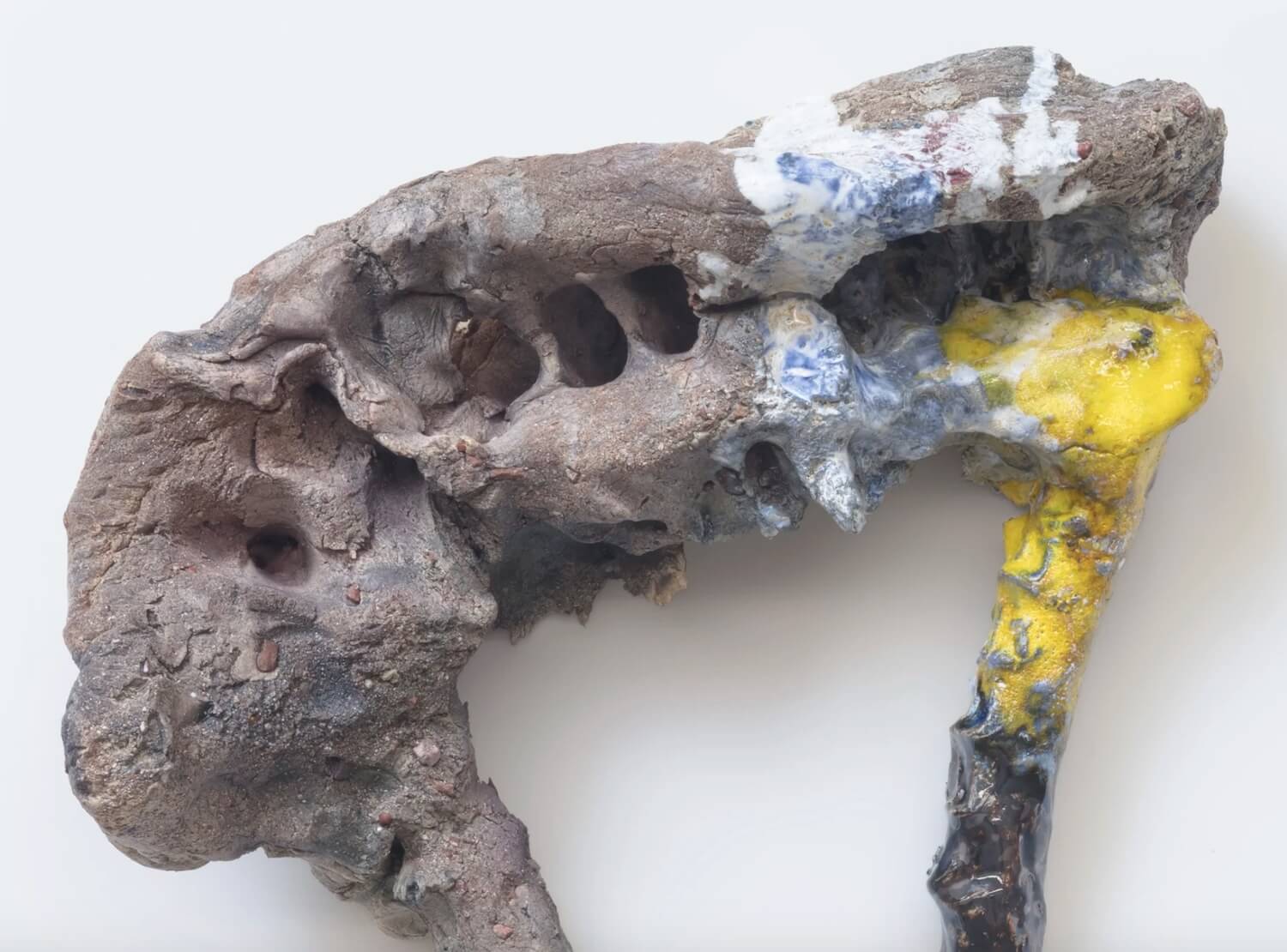

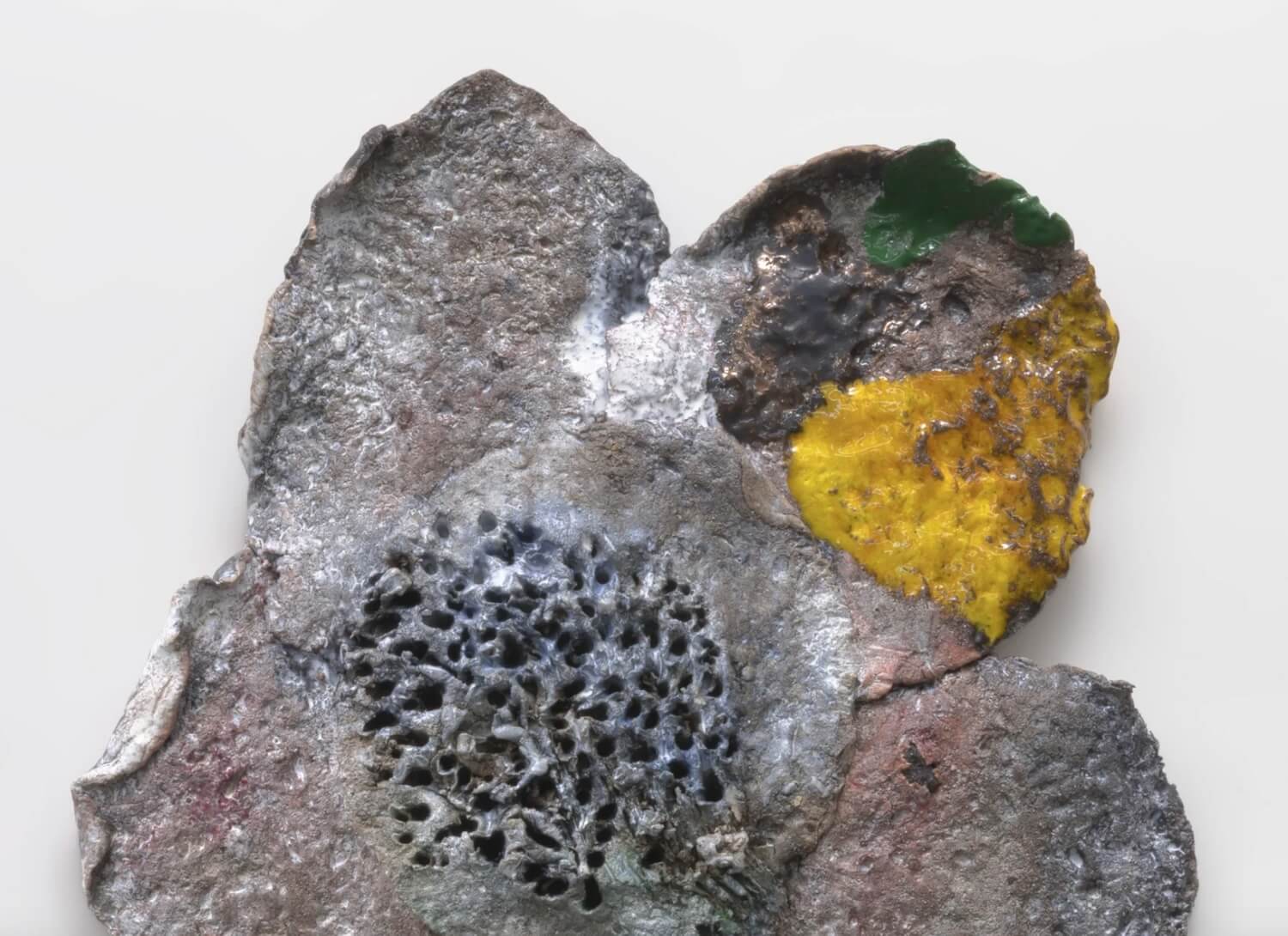
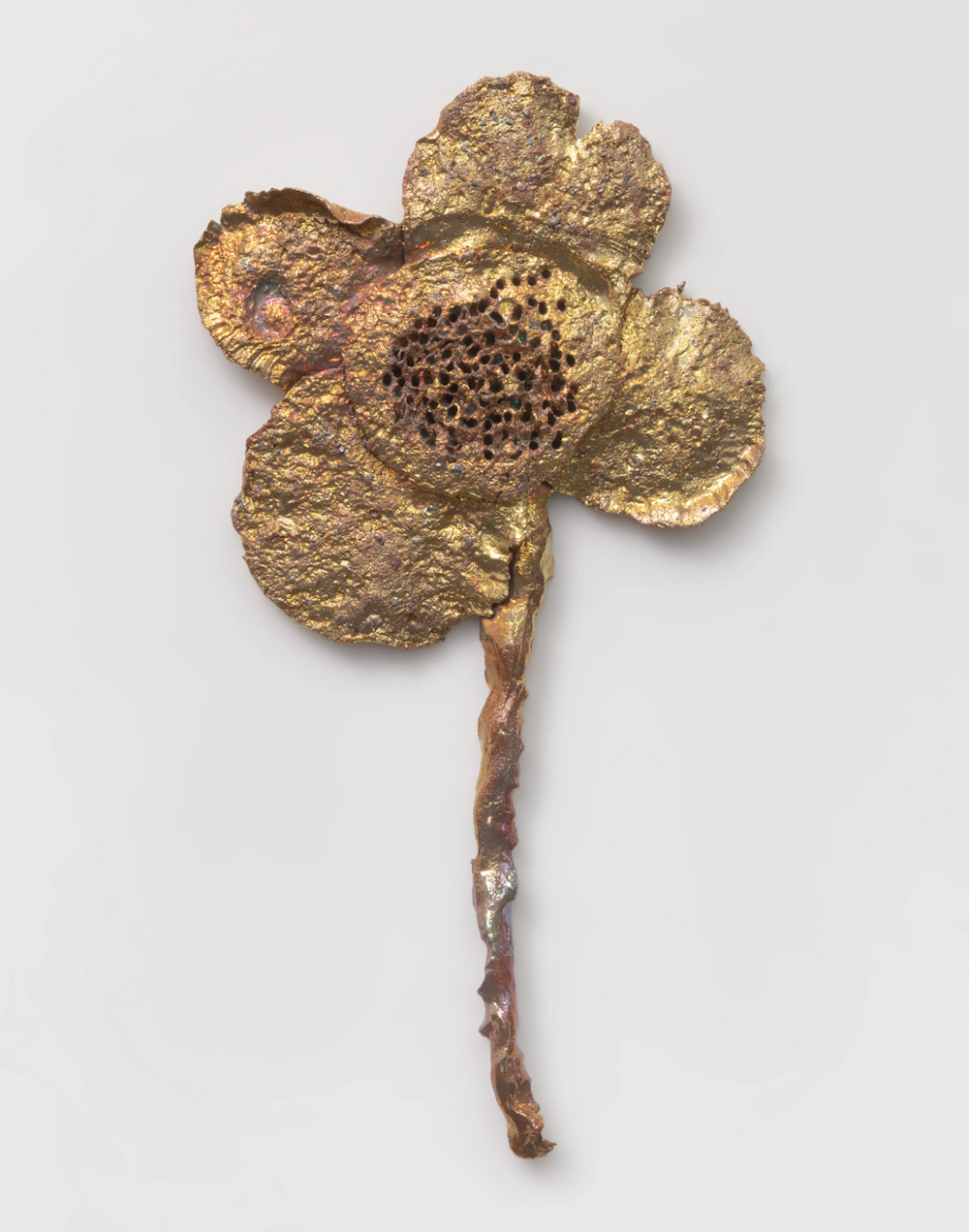
Masaomi Yasunaga’s engagement with excavation is fundamental to both his studio process and to the appearance of the finished artworks. Yasunaga developed glaze and glass powder compounds from which he forms his sculptures. He buries the works in various earthen materials before entering the kiln. The objects melt and bond with the surrounding materials, which the artist varies from work to work. Several of the works in the exhibition are encrusted with unrefined clay, which burns to a peachy colored hue.

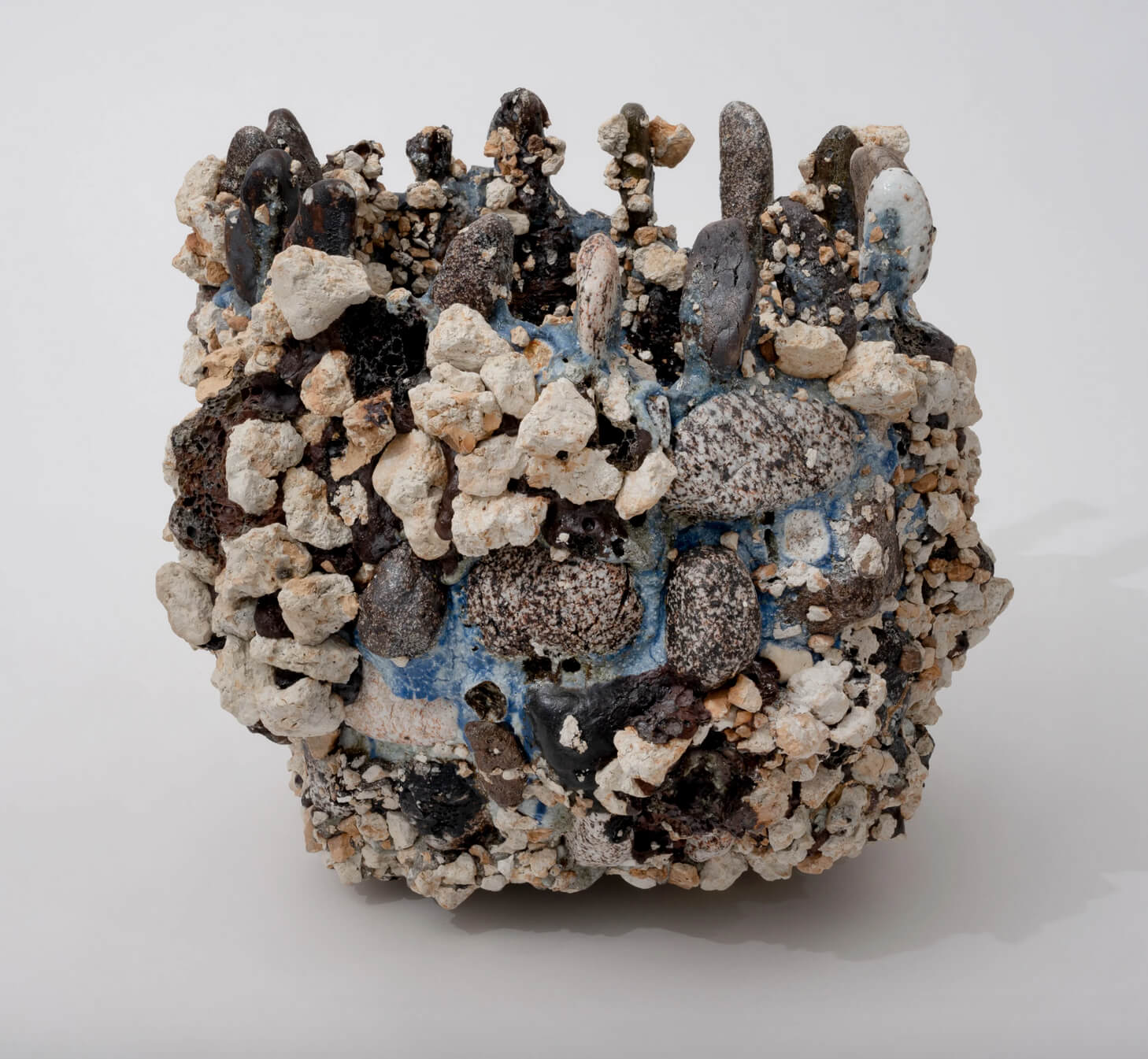
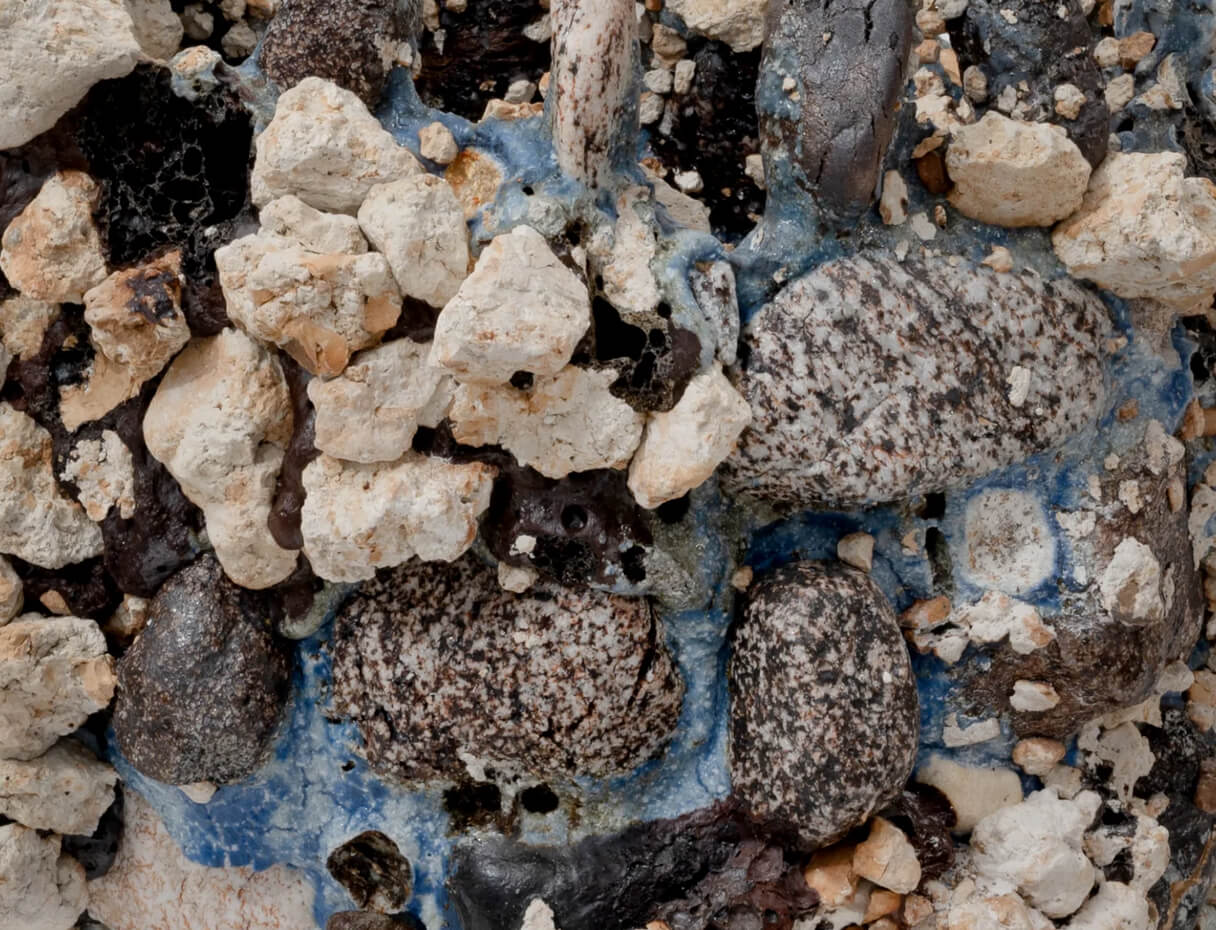
Other works are buried in sand, achieving a smooth finish. Recently, the artist has incorporated porcelain, smooth river rocks, even bricks. The unpredictable processes yield mixed results, which the artist accepts and works with, sometimes converting vessels into animals or birds.
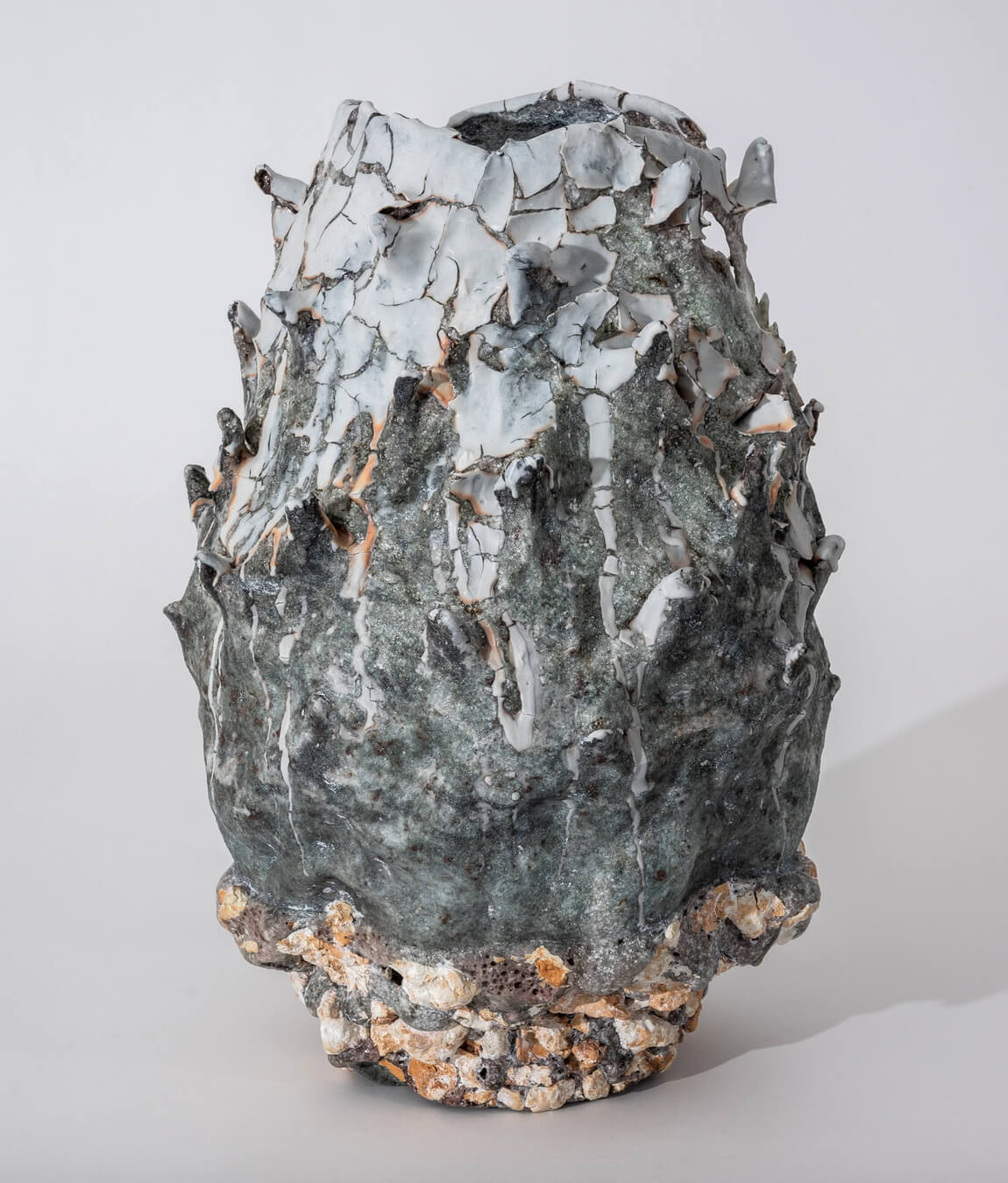
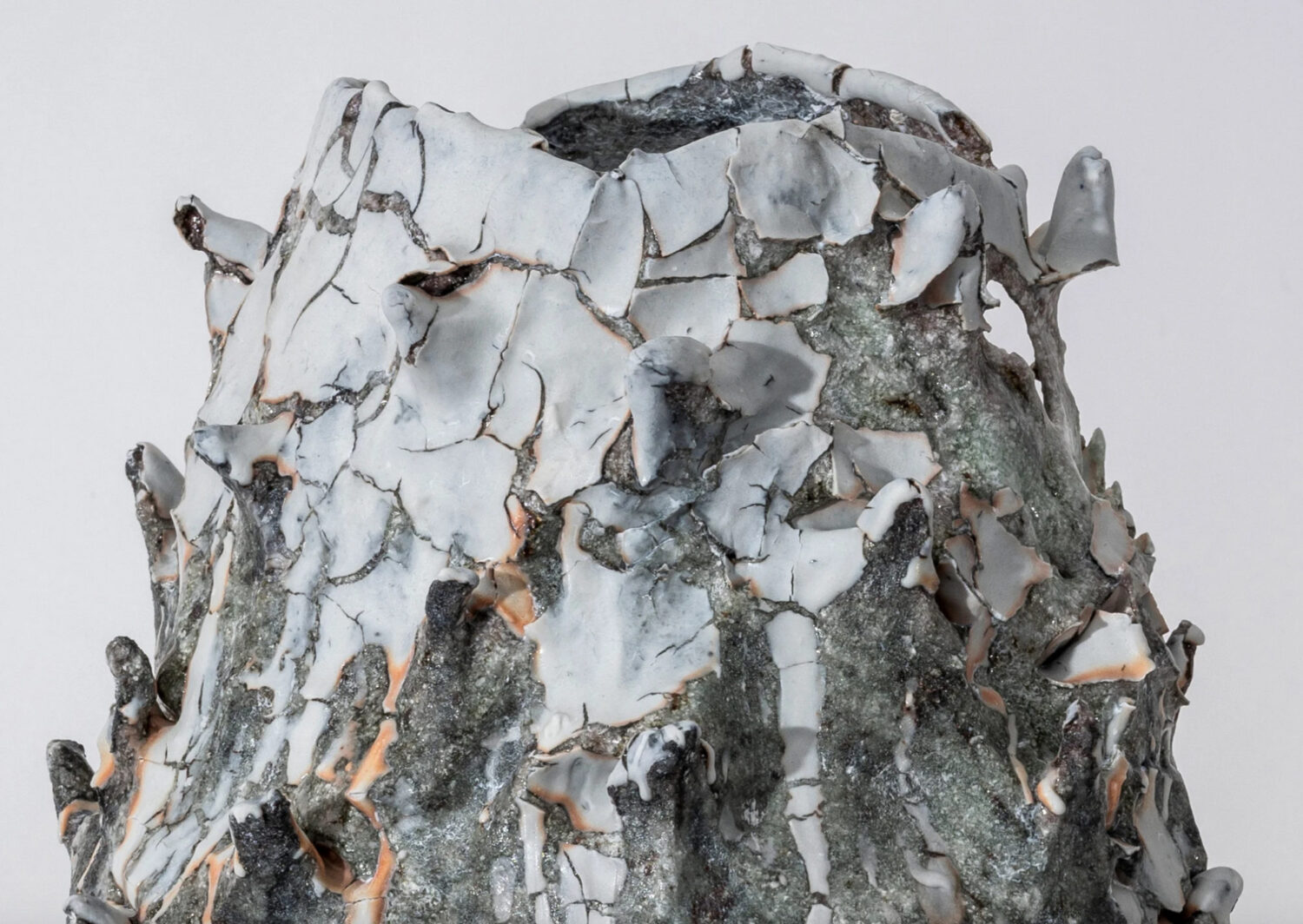
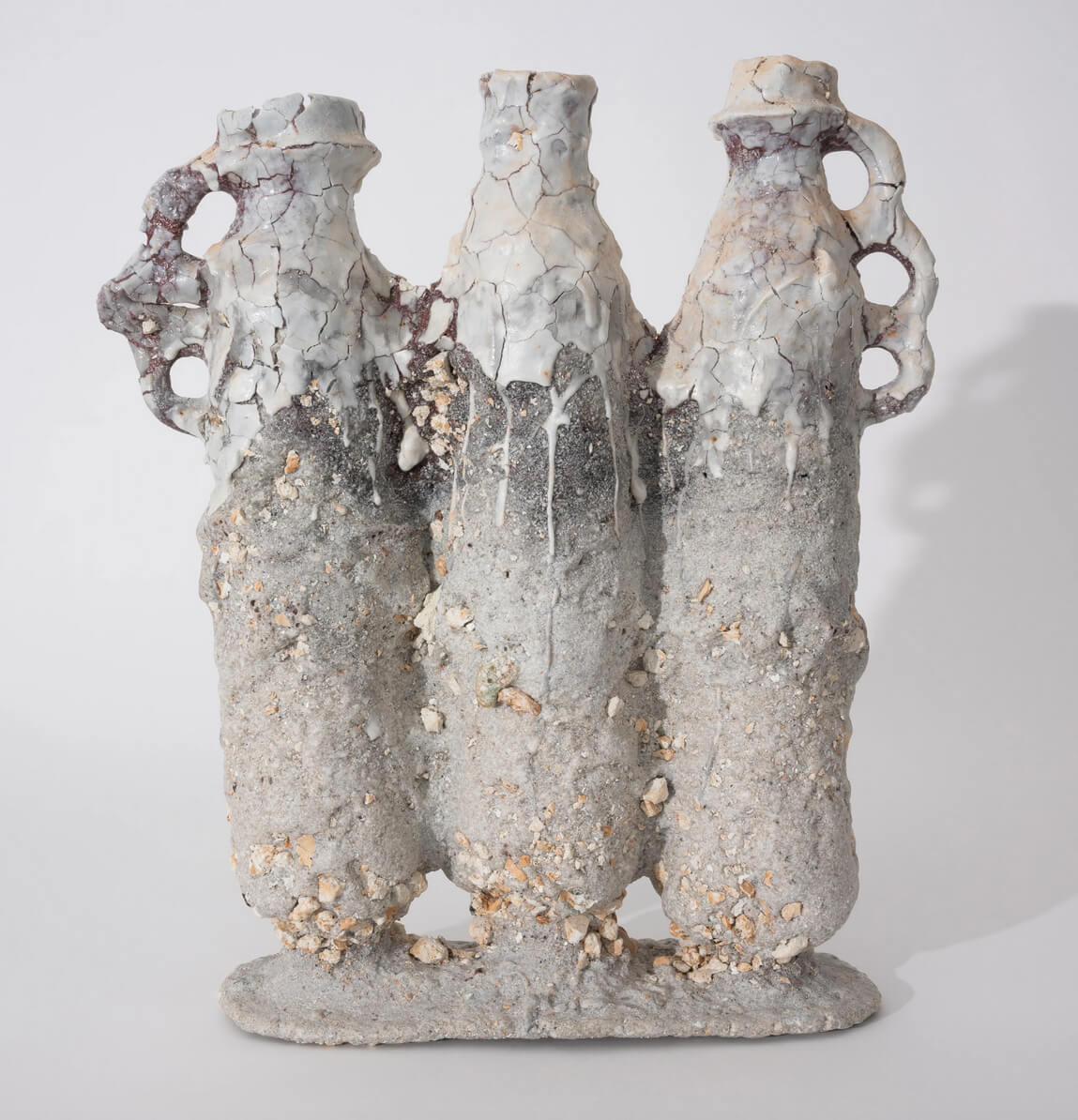
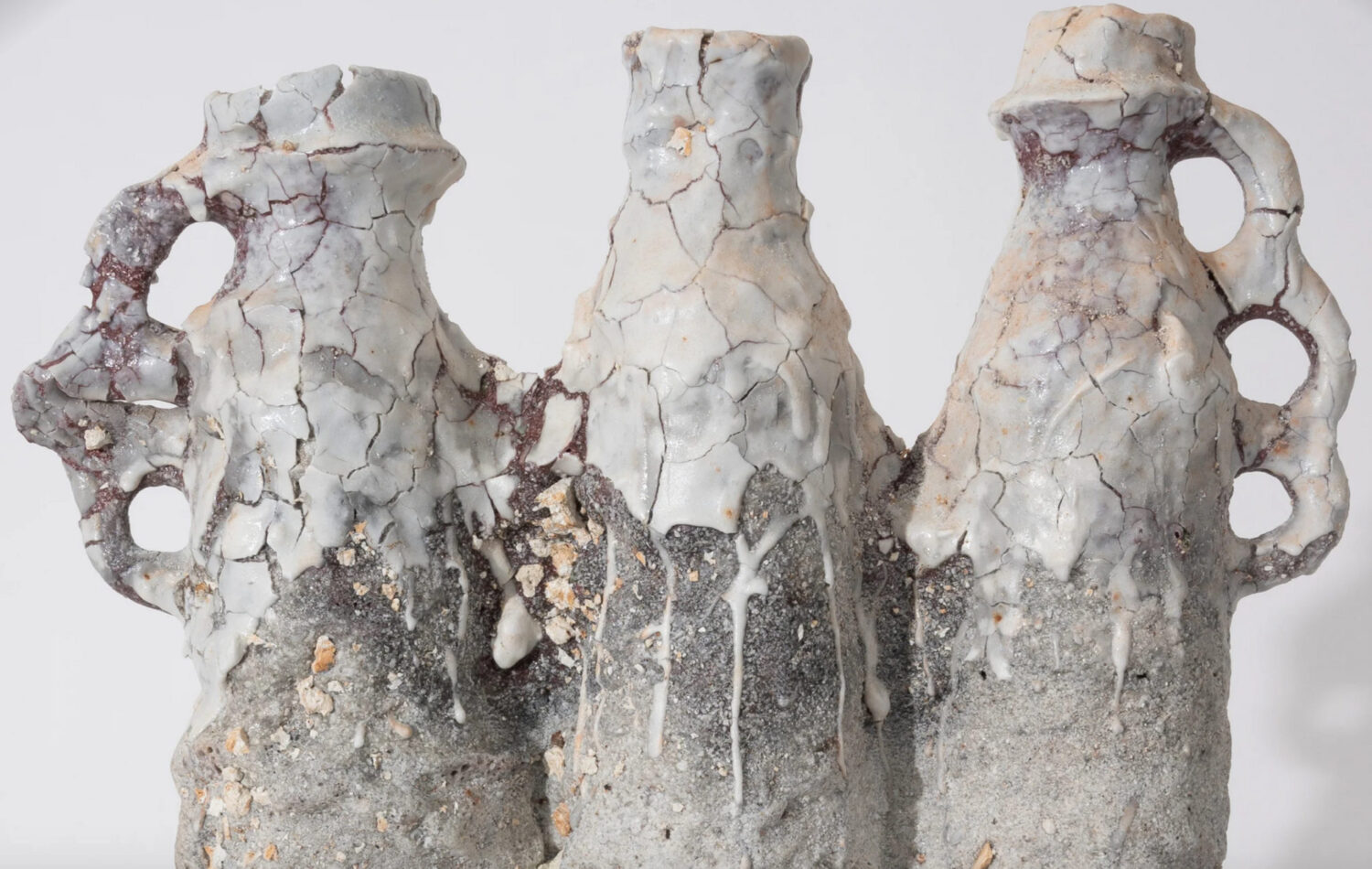
Yasunaga grew up in Japan’s Catholic minority and connects this experience to ideas of pre-destined life and death. His intrinsic aesthetic references his experience in this subculture, though his vessels are not ritual objects. With titles citing emptiness, melting, molting and crumbling, the artist acknowledges the entropy of organic materials, and the emotions of accepting the inevitability of change. While the vessels may or may not be functional, the artist does hold the hope that they can be filled with life.
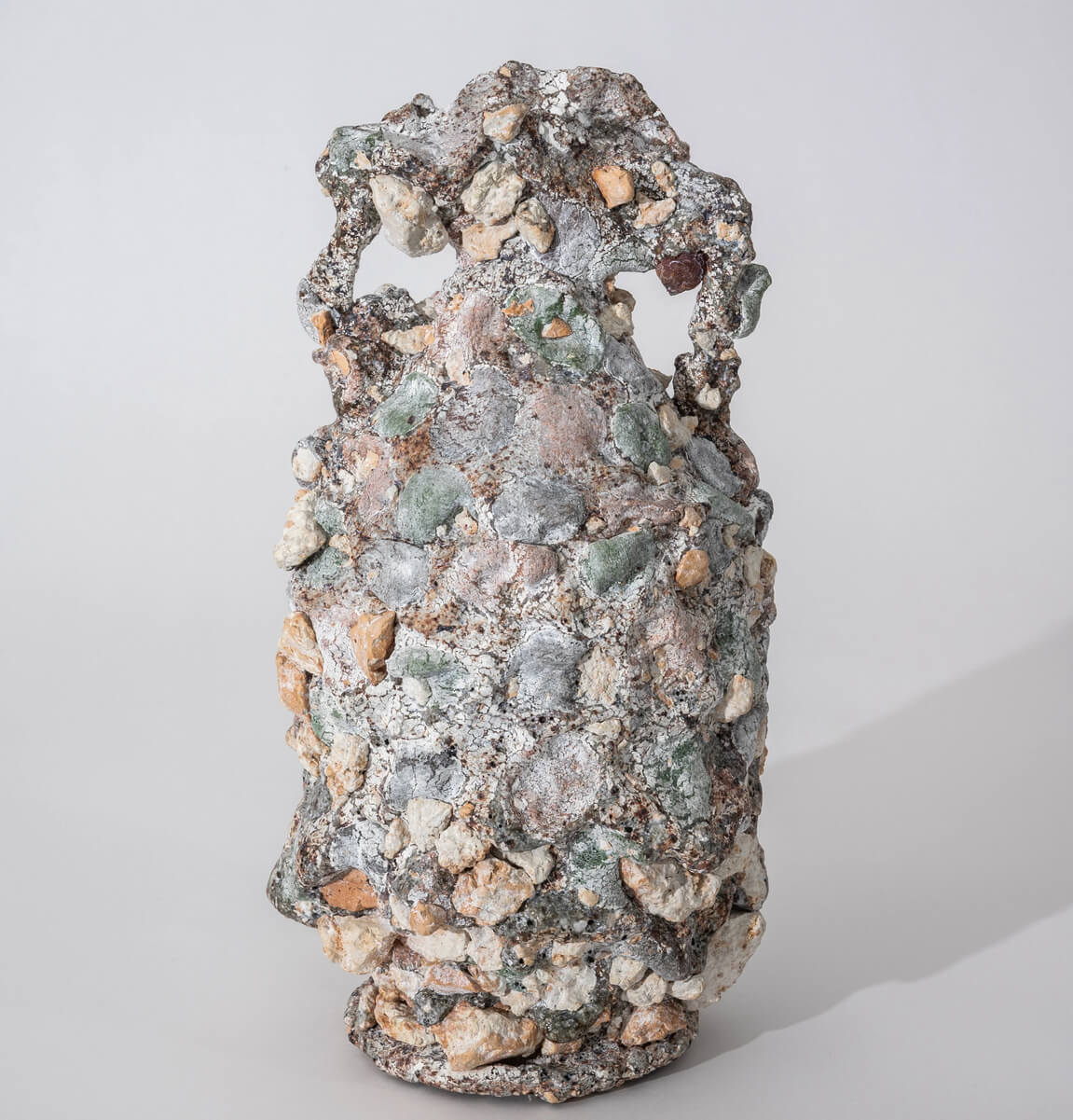
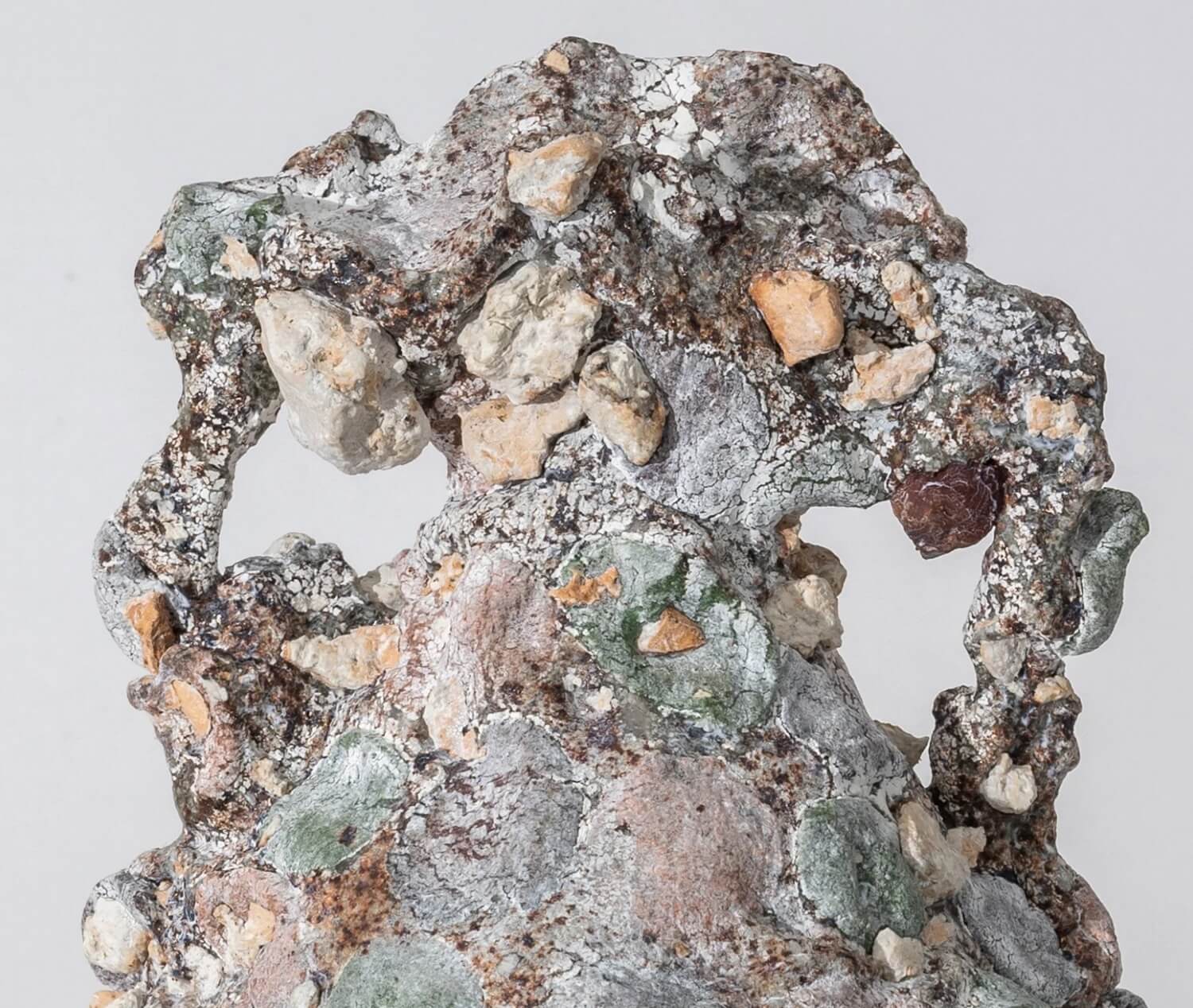
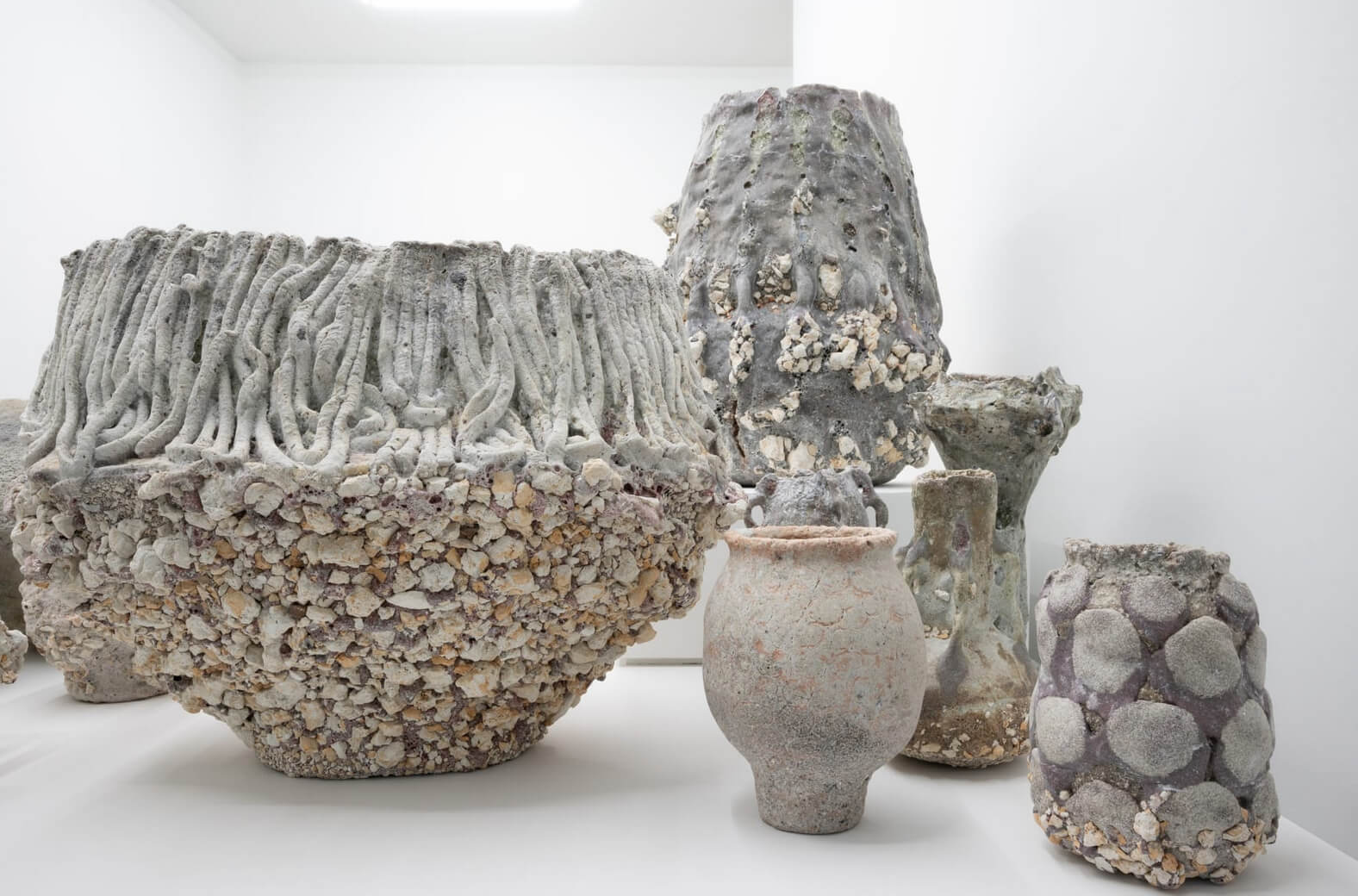
Learn more about Sterling Ruby and Masaomi Yasunaga in Cfile
Text and Images courtesy of Nonaka Hill
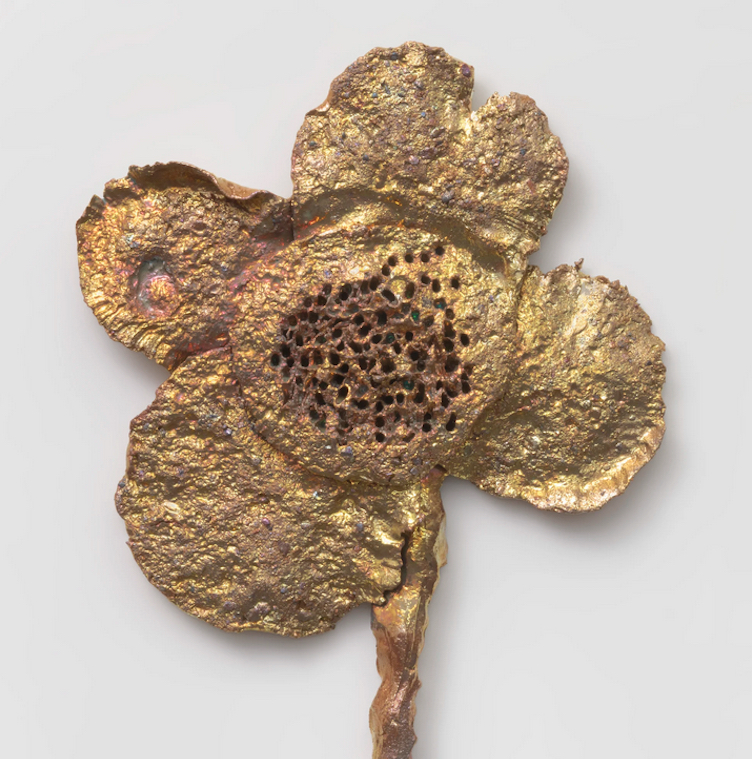
Crunchy works that do stand out by contrast with so much else. Thanks.
Absolutely breathtaking encrusted vestiges of a bygone civilization. Mysterious mineralized artifacts and fossilized plants stand as a muffled testament to what we have lived beneath the strata of time.